- Home
- Colleen McCullough
Life Without The Boring Bits Page 13
Life Without The Boring Bits Read online
Page 13
Now to look at three examples of the same piece of work as seen by creative teams working in three different eras: the 1930s, the 1950s, and the early 2000s.
In 1929 the world was plunged into the Great Depression. Nowadays governments have grown more cunning; they don’t tell the people that they’re in the midst of an awful economic depression, they simply pass what’s happening off as a minor recession and go right on blithely spending money they don’t have. Whereas the Great Depression was the first global stock market crash, and government was as ignorant of the phenomenon as were the people. Joblessness was a disaster in a world not geared for welfare payments or pensions; shanty towns mushroomed, and women with families despaired.
In this climate, a beautiful blonde woman named Clare Boothe Luce wrote a play called The Women which ran on Broadway for a very long time. It was clever enough to pillory the world of rich women addicted to clothes and gossip, and witty enough that some of its lines went into dictionaries of quotation (“substituting fashion for passion and the analyst’s couch for the double bed”).
Of course The Women was made into a film — black-and-white, as films were in the 1930s. But it did contain a segment shot in a thrilling new process called Technicolor: a fashion parade. Its stars were the biggest female names of the day, and it was ideal material for a time when America was painfully starting to emerge from the worst of the Great Depression. Funny and extremely well acted, it laid bare the lifestyles of the Idle Rich without mercy. The film’s makers did something very new by clothing each of the characters in garments that reflected her personality, and the result was extraordinary. I remember Rosalind Russell, who played the bitchy, mischief-making marplot, wearing an outrageous dress appliquéd all over in huge eyes, and a svelte Joan Crawford as the husband-stealing vulgar shopgirl displaying her superb figure in underwear that may have covered more than it would today, but managed to be sexier too. The colors of the crazy clothes in the Technicolor fashion parade were as dazzling as luxurious.
In 1956 the film was remade as The Opposite Sex. Why the title change? Who knows, save that the 1950s were the prim and proper era, and the word “women” was — um — well, um — pretty blunt. It suggested human beings with vaginas rather than with pudenda ending in a solid wall, like dolls. The dialogue was still pure Clare Boothe Luce and the film could not but benefit from being in Technicolor from start to finish, including the fashion parade. The clothing in this version was stunning, as were the ladies’ figures. It was the era of Monroe — big boobs, tiny waists, swelling hips, impossibly long and slender legs — and not a plastic implant anywhere. The colors were brilliant in every sense of that word: a veritable feast for the eyes.
In about 2006 a third version appeared, its title restored to The Women. There was absolutely no other point in common with Clare Boothe Luce’s play, as her dialogue had been removed. The script was written by the (female) director, who believed the essence of wit was to have a character say “Shit!” Shit. You stupid director! Need I say the film was atrocious? It was.
Even Clare Boothe Luce’s poke at the Idle Rich had gone; third millennial rich women don’t dare be shown on camera as idle. They can shop until they drop, but not on camera! I mean, the impoverished female herd might get the idea that rich women have more of everything, and we can’t have that — think how hard it would be to hire a maid! So the heroine, whom I called Mrs. Mops because her hair looked as if she’d stuck her finger in an electrical outlet, works her buns off giving lunches, brunches and munches for charity, and does the cooking herself. The food, incidentally, consisted of a wooden bowl of raw vegetables — gotta watch the figure! My question: what for? No one had a figure to watch. With the exception of Jada Pinkett Smith, the actresses were all overweight.
It was colossally egalitarian, so much so that one had to wonder why any of them wanted to be rich. The entire film was shot in sepia tones, giving the viewer an impression that there wasn’t much difference between the vulgar shopgirl (Hispanic in this version, another put-down) and Mrs. Mops the aggrieved wife. Mrs. Mops, it turns out, is more concerned with a secret ambition to be — sssh! guess! — a fashion designer. Wow! After the sepia tones, the inevitable fashion parade (clothes designed by Mrs. Mops) was red, red, red, red, and more red. All it proved was that Mrs. Mops had the money and the contacts to burst upon the fashion scene as she never, never would have were she the penurious daughter of an alcoholic coal miner from Wilkes-Barre, Pennsylvania.
There’s no bitchy marplot in this version, which shot the entire opus down in sepia flames. I mean, The Women is the tale of how there is always one woman who can’t bear to see her pals happy, and how she shifts heaven and earth to destroy all hope of happiness. Was this the director’s fell hand, or did the star destined to play the bitch decline to be one? Where did the money to make this awful movie come from? Hollywood must be as stuffed with fools as everywhere else.
The best bit in the film was a shot from behind of the four heroines galumphing down Fifth Avenue dressed in the most ghastly clothes imaginable. The tatty blouse not tucked into the skirt is a terrible look anyway, but the chubby legs and big bottom of a rear view screams danger to any woman of sense. My mother was no great shakes as a mother, but she did give me one immensely valuable piece of sartorial advice: always use two mirrors to see what you look like from behind. The phrase is, “the back end of a bus”. And there they were, the back ends of three buses. Mrs. Mops was safe, as she was wearing a subfusc granny dress and flatties — hides a multitude of sins. But Kmart, not Saks.
Sepia has crept in everywhere. There used to be an avant-garde little skyscraper on the North Sydney skyline, a building much beloved by many. It was like a stack of children’s blocks, each one a sheet of glass framed in brilliant orange. Then at the commencement of the third millennium, it got a face-lift, and turned from orange to sepia-beige. What a blight! What chicken-hearted cowardice! The world was suddenly a drabber place. For that orange-rimmed building was very good of its kind, it adorned modern architecture as so much modern architecture doesn’t.
Sepia tones indicate a loss of hope, of optimism, of joy, but in a defeated, passionless way; they belong to bureaucrats and timid souls, to people with feet in a rut and tunnel vision. In the 1950s and 1960s the world genuinely thought that there was a good chance of massive nuclear holocaust; the Campaign for Nuclear Disarmament flourished. Yet that world was stuffed with color. What’s happened in the meantime?
Too many people on the planet. Terrorism. Cipherdom. A sense of no new worlds to conquer. Climates of fear and mental depression breed sepia tones. No one wants to stand out from the crowd, best illustrated by the black dress for women. Black is sepia carried to the ultimate degree, for black is the color that is no color at all. Walk into a black-tie reception, and you walk into a sea of black, black, black. Indistinguishable targets for assassins, crazies, bores.
And so my essay dwindles down; inevitable, when the subject is a neutral palette. Climax is negated, drama is defused.
Oh, but I would like my orange building back!
BELITTLING BILL
In the year 1769, shortly after the 150th anniversary of the death of William Shakespeare, one Herbert Lawrence announced that the Bard could not possibly have written the works attributed to him, as he had neither the education nor the cultural experience their author must have owned. It was left to William Henry Smith in 1857, nearly 250 years after Shakespeare’s death, to assert that there was only one possible candidate for said authorship: Francis Bacon, Baron Verulam and Viscount St. Albans. And after Smith came the cypher-seekers of the American Baconian movement, who found cryptograms within the works that abso-bloody-lutely proved Bacon was the author. Poor old Bill Shakespeare, so long in his grave, was dispossessed of his entitlement to his work.
Elsewhere in these unruly pages is an essay on bureaucrats called “Unelected Power”, but nowhere have I discussed a different kind of paper-pushing parasite: namely, the academ
ic scholar. His (her implied, as always) home is among the spires, graciously gothic or rudely red-brick, of institutions of tertiary learning known as universities. Within such hallowed halls there floats o’er all a mantra: “Publish or Perish!” From the dissertation and the thesis to the hugely heavy tome, an academician must publish unless he be a very rare bird indeed — a superlative teacher. It’s a dog-eat-dog world, it has its stars and its slugs, its seekers after truth and its seekers after coveted position. As in any other kind of institution, the individual’s ability to play the political game is paramount to the advancement — or otherwise — of his career.
Yet to make a big academic splash is extremely difficult, particularly outside the sciences and mathematics.
Imagine an eighteenth-century scholar of no moment suddenly visited by an enormous enlightenment about the acknowledged master wordsmith of the language! Plays, poems, an output so varied and world-encompassing that it couldn’t possibly, under any stretch of an eighteenth-century imagination, have been the product of a Midlands rustic of scant education and experience. One hundred and fifty years after said Midlands rustic’s death, this conclusion was not only reached, but persisted in sufficiently large academic circles to lead a nineteenth-century scholar to come to the conclusion that, of all the luminaries who adorned the late Tudor and early Stuart literary scene, only Francis Bacon had the erudition, experience and sophistication to have been the true author of the works hitherto attributed to that Midlands rustic, William Shakespeare.
Why were these conclusions reached at all? And why, having been made, do they hang around like the odor of skunk cabbage in a swamp to this day, to diminish the achievements of a man whose efforts were not questioned for a quarter of a millennium?
The answer is simple. They were made to fuel some scholar’s academic reputation, and they persist because, exactly as in the case with bureaucrats, their perpetuation perpetuates the species. How boring it would be if no one had ever queried Shakespeare’s right to be called the author of his works! How trite it would be to blame the phenomenon of Shakespeare on something as ephemeral as genius! How echoing the corridors of Academe, devoid of their more lunatic fringe! It even serves a purpose: a few students, who otherwise wouldn’t, read the works of Francis Bacon, whose life, certainly, is fascinating, even if his literary output is a trifle dense.
Envy is worse by far than jealousy. Envy is cold, sour, pale, misshapen, and gives off the putrid greenish glow of rotting things. There is no passion in it, no roaring fire. Ah, but it can provide some lives with motivations far above the quick and mortal thrusts of jealousy! It isn’t in the forefront of a mind, it hunches in the background like an unacknowledged monster, and it waits patiently for the opportunity to tear down reputations, ideas, even dreams. Lawrence and Smith were just envious men.
I have loved Shakespeare since I was introduced to him in school, at about fifteen years of age. Neither the plots nor the characters of his plays turned me on at the time; what did was the way he said things. Which I suppose was the instinctive reaction of a potential wordsmith confronted with the outpourings of a master.
The man had a fantastic gift for words, and could express an idea in words as modern as tomorrow, as old as humanity. So often, reading or hearing Shakespeare, the actual words bear no relation to time passed or passing.
“Put out the light, then put out the light.”
There will never be a better way to say it, as sinister as it is specific, horror masked yet unmasked. The killer who can’t bear to look.
I believe that William Shakespeare existed, that he was a rustic from the Midlands, that he had at least some education from a good if free local grammar school — and that, during the course of his fifty-two years, he wrote the poems and plays credited to him. So close to the Welsh Marches, he may have had Celtic blood, a definite asset when it comes to hearing the music in words. By profession he was an actor, and seems to have prospered at it, especially after he started writing plays. It is common for a creative person to go into the type of creativity that satisfies the drive within him to do new things in the most loved, most familiar medium. As a playwright he will have fully understood the tricks of the trade, known the short-cuts and the dramatic devices, all a great help in building a structural armature for the finished edifice.
He wrote comedies, tragedies and historical pieces, which indicates that his gifts were multifaceted. His earliest poems were in the vein of narrative epics: the young bird flying high and wide. Whereas the bird of the sonnets hovers where the air is loveliest and the view far enough. That he read Ovid’s Amores and Metamorphoses we know, and there can be little doubt that he also read Plutarch’s Lives, even if he didn’t have any Greek. He may have obtained access to some scholar’s translation. Latin he would certainly have had, it was all around him. As any good Tudor schoolboy would have, he knew his Kings of England. It is important to remember that the Midlands and the West Country had a far higher literacy rate than did London until the twentieth century. He had a great love for Italy and things Italian; what isn’t known is whether this was knowledge gained at first hand, or from reading.
There were long periods of “rest” during which an enterprising man might have read and researched, including the two years of plague that saw the theatres closed. Some great noblemen had impressive libraries, but we do not know enough about Shakespeare to pin his sources of material down with much specificity. Very definitely he prospered, owned property in his home town, but he was also burdened with a bankrupt father.
While reading is well and good, there is one quality any man may have that people tend to overlook: the passion for watching others, of listening to any conversation carried on within earshot, and for tracing all the threads of an event. I mean the kind of curious soul who takes an interest in the doings of his whole world. William Shakespeare was surely that kind of curious soul. It’s all stored up in the mind, future grist to the writer’s mill, though nary a note may be taken.
Genius is impossible to define, it takes so many forms, beyond stating that it indicates a degree of knowledge, excellence and skill not present in the vast preponderance of human beings. In the sciences and mathematics it is easier to discern, and the farthest pole from that is probably literature. Only four names spring to my mind: Shakespeare, Molière, Cervantes and Goethe (screams of outrage from all sides). Not my catalogue, just the one most mentioned, so it’s not my fault. But do you begin to see what I mean? What about Ibsen? T.S. Eliot? Zola? Pirandello? Joyce? Marquez? When does the accolade fall, the laurel wreath settle? Who’s plain wacko? It’s all in the eye and ear of the beholder, except for the Famous Four, about whom, no argument. They’re literary geniuses.
Therefore William Shakespeare was a genius. Certainly that’s my judgement too. Everything he experienced he fed into his life’s work, from the most trifling conversation to the most appalling tragedy: every word ever read or heard, every face ever seen, and all grafted to a far rarer quality: empathy. Whatever he wrote about, he felt the emotions as he wrote about it. So many gifts, all squeezed into one man’s skull. It does happen, as it did with William Shakespeare.
Take Francis Bacon. A political animal, if ever there was one. A court creature, to whom the good opinion of the sovereign and the sovereign’s favorites was all-important. A lawyer, yet! Related to the arch-bureaucrats of the time, the Cecils. His father, the grossly obese Sir Nicholas Bacon, was Lord Keeper of the Privy Seal; even in 1600, the name Bacon was an old and a respectable one. Two marriages and a plethora of sons saw Bacon’s father hard put to establish them all satisfactorily, and he died before his youngest, Francis, was properly provided for. Thus both cheated and exposed from birth to a grand and sophisticated world, Francis Bacon’s life was marred by perpetual debt, a series of bitter enmities, and a number of allegations that he could be bribed.
But where, in Bacon’s desperately busy life of intrigues, did he find the leisure to write a formidable body of plays? Bacon
’s life was given over to schemes aimed at improving his economic lot through court appointments, the bench and parliament, as well as to his own academic work, which was of a far different nature than Shakespeare’s opera. Poetry can be dashed off, and in fairness to Bacon and Shakespeare both, once a poetic form is mastered, it becomes a mind-set a wordsmith finds easy to dash off. No, it is the plays that are the stumbling block, given that one man was immersed in the theatre as a way of life, when the other man was not.
So for Shakespeare the plays were a natural offshoot of a much loved career; he inhabited the theatrical world, knew Marlowe, Jonson and many other luminaries. He knew how plays worked: what the audience had to be provided with by way of information, as well as how the play should progress on stage all the way to its denouement. For a master of the form in a tearing hurry, it would have been possible to write a whole play in about a month, maybe well under that. Especially were the master wordsmith a genius “on a roll” as we’d phrase it today. Rolls do happen. The words flow out like smoothest syrup, the framework goes up without one strut or bolt wrongly placed, and the characters find speech as profound and perceptive as exactly right for their natures. At other times the roll doesn’t happen, so the writer struggles. Any wordsmith would attest that the worst feature of a roll is keeping up with the flow of words and ideas spilling out of the brain. But in order to have a roll, the wordsmith must know his craft more intimately than a man knows the contours of his own body.

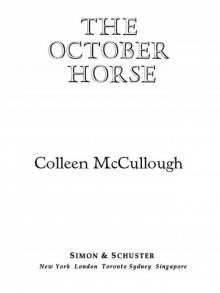 The October Horse: A Novel of Caesar and Cleopatra
The October Horse: A Novel of Caesar and Cleopatra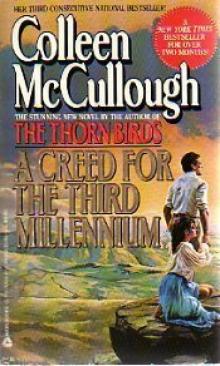 A Creed for the Third Millennium
A Creed for the Third Millennium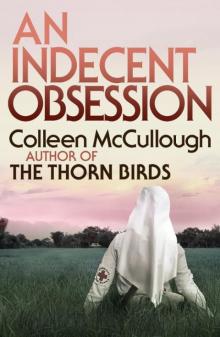 An Indecent Obsession
An Indecent Obsession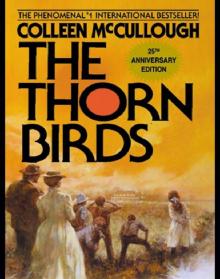 The Thorn Birds
The Thorn Birds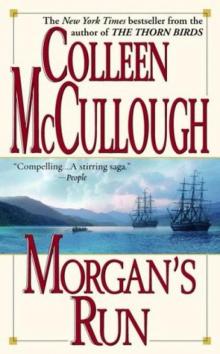 Morgan's Run
Morgan's Run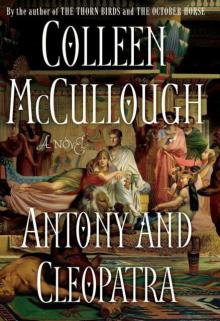 Antony and Cleopatra
Antony and Cleopatra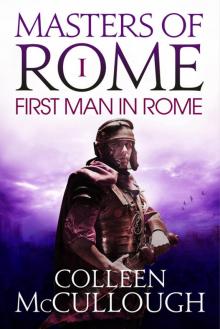 The First Man in Rome
The First Man in Rome Caesar
Caesar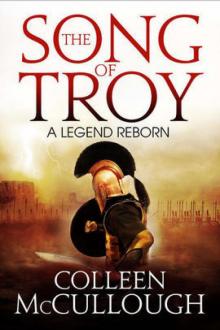 The Song of Troy
The Song of Troy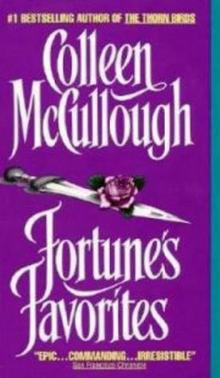 Fortune's Favorites
Fortune's Favorites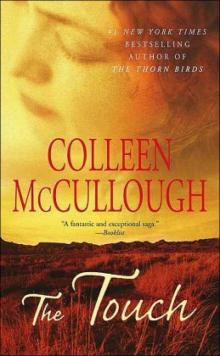 The Touch
The Touch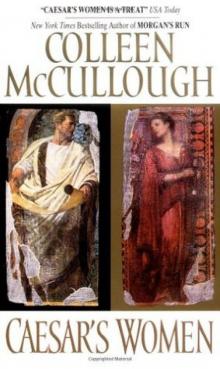 Caesar's Women
Caesar's Women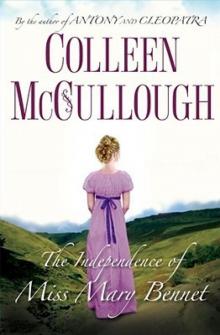 The Independence of Miss Mary Bennet
The Independence of Miss Mary Bennet The Grass Crown
The Grass Crown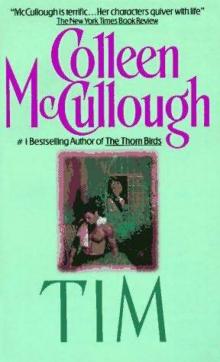 Tim
Tim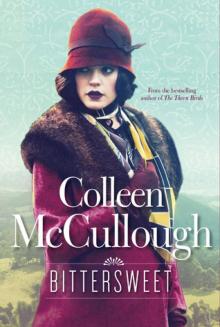 Bittersweet
Bittersweet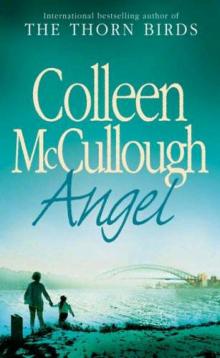 Angel
Angel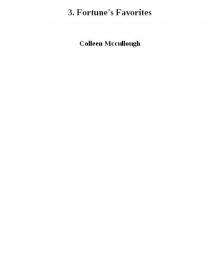 3. Fortune's Favorites
3. Fortune's Favorites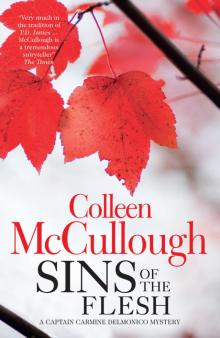 Sins of the Flesh
Sins of the Flesh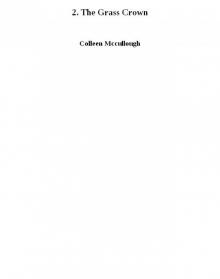 2. The Grass Crown
2. The Grass Crown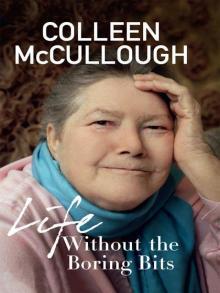 Life Without The Boring Bits
Life Without The Boring Bits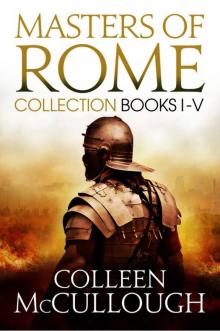 Masters of Rome Boxset: First Man in Rome, the Grass Crown, Fortune's Favourites, Caesar's Women, Caesar
Masters of Rome Boxset: First Man in Rome, the Grass Crown, Fortune's Favourites, Caesar's Women, Caesar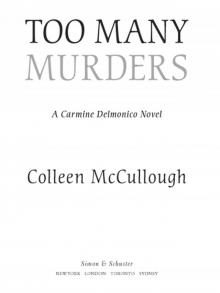 Too Many Murders
Too Many Murders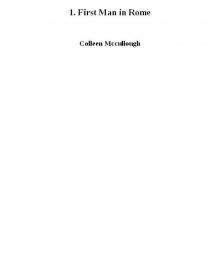 1. First Man in Rome
1. First Man in Rome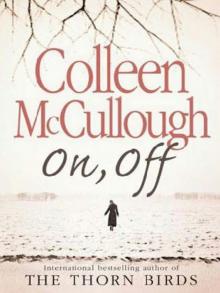 On, Off
On, Off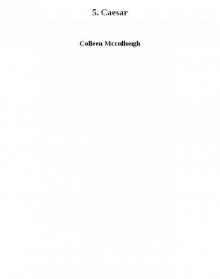 5. Caesar
5. Caesar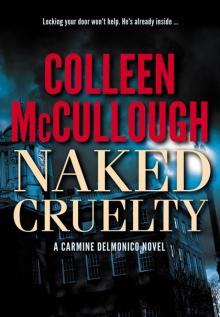 Naked Cruelty
Naked Cruelty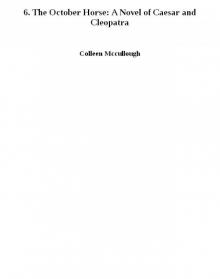 6. The October Horse: A Novel of Caesar and Cleopatra
6. The October Horse: A Novel of Caesar and Cleopatra